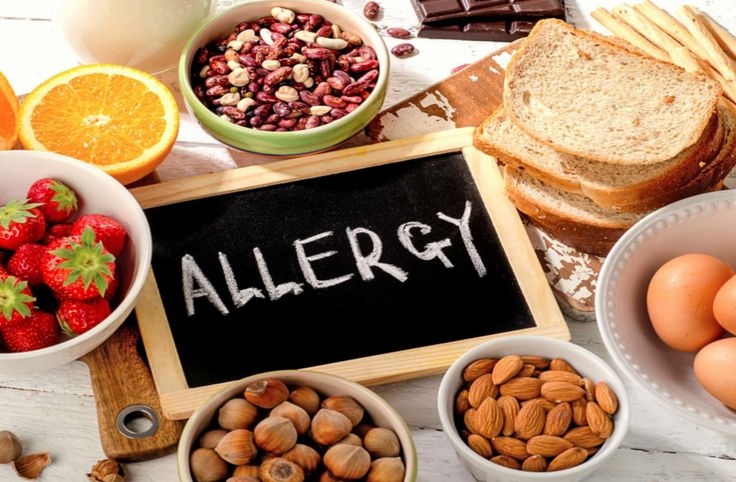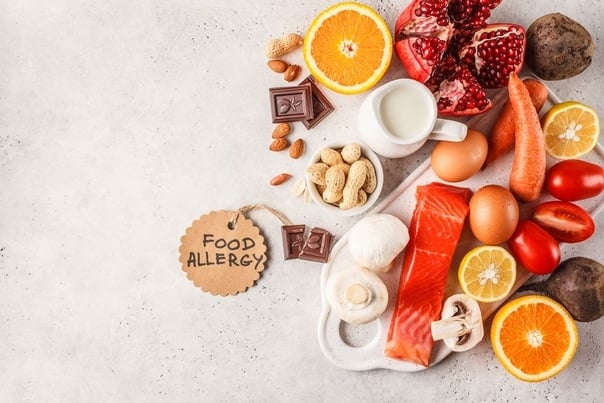Could an Overly Clean Society Contribute to the Rise in Food Allergy?
Four immunologists from Yale University suggest that the higher rates of food allergies may be the result of environmental factors and an improper protection system.
The research, which the scientists published in Cell, indicates that a hyperactivity of the body’s toxic food protective system in response to environmental factors is the reason behind this rise.
They also wrote that up to 8% of children in the United States may have a fatal response to what are categorized as the eight major food allergens, which include: milk, eggs, wheat, soybeans, fish, crustaceans, shellfish, walnuts, and peanuts.
The Centers for Disease Control and Prevention reported a rise in the rate of food allergies in children from data collected from 1997 to 2011. Researchers found that over 14 years, the rate of food allergies rose from 3.4% to 5.1%.
According to the latest data from 2016, this rate rose again to 7.6%. This means that the rate has doubled in 19 years. Immunobiologists at Yale University suggest that this rise may be the result of the increased amount of unnatural substances or chemicals in the environment.
Our bodies have a food quality control system
Doctors and researchers are concerned about the growing prevalence of food allergies. The Yale University researchers point to the multiple sensory mechanisms your body uses to monitor what you consume and the role they play in the increasing prevalence of allergies. These systems include the sense of smell, taste, and chemical sensory processes that happen in the gut and are influenced by gut bacteria.
Researchers state that allergic reactions play a role in the body’s food quality control system. The system involves identifying and responding to antigens in food that can lead to a fatal food allergy.
One of the prevailing theories on the rise in food allergies is the “hygiene hypothesis.” Children and adults are no longer exposed to natural pathogens in the environment. This leads to increased sensitivity in the immune system.
In the Clinical & Experimental Immunology journal in 2010, scientists elaborated on the causes to include processed foods, detergents, and other environmental chemicals, as well as an “overly clean” environment in which we’re not exposed to natural microbes.
Immunobiologists at Yale University say that all of this plays a role in undermining your internal food quality control system, which is designed to help protect your body from harmful chemicals. Scientists believe that this hypothesis may be the basis for future research, treatments, or methods of allergy prevention.

In a press release at Yale University, one of the researchers, Ruslan Medzhitov, highlighted the problem the researchers face, saying, “We cannot invent ways to prevent or treat food allergies until we fully understand their underlying biology. You can’t be a successful auto mechanic unless you know how a normal car works.
One factor influencing this is the increased use of hygiene products and the overuse of antibiotics, in addition to making changes to the diet and the increasing consumption of processed foods, while reducing the intake of naturally grown foods and altering the composition of the gut microbiota. The innovation of food preservatives and environmental chemicals such as detergents has led to the emergence of new agents that are detected by immune systems.”
When your body detects that it has consumed toxins, it also activates the parasympathetic nervous system, which aims to neutralize the health risk. The team believes that the combination of changes to the food supply and the environment made the immune system respond to food proteins effectively in the same way it responds to protect the body from toxins.
Other factors that cause food allergies
Other hypotheses that have been proposed for increased food allergies include excessive use of medications used to reduce stomach acid. This can alter the gut flora in the digestive system.
Research conducted at King’s College, London, also suggested that when parents avoid feeding their children foods known to cause allergies, the likelihood of later allergic reactions increases.
The study authors selected children who were allergic to eggs or had eczema in order to find out if avoiding an allergen caused an increased or decreased allergy to a kind of food. The data showed that when parents avoided feeding their children peanuts, 13.7% of them developed an allergy when they were 5 years old, compared to 1.9% of those who ate peanuts as a child.
Researchers are also questioning whether the rates of food allergies are currently on the rise. That’s because we are spending more time indoors, which explains the fact that 40% of the population suffers from vitamin D deficiency, which plays an important role in regulating an effective immune response.

Research published in Allergy and Clinical Immunology analyzing the use of EpiPen in the United States found a huge difference between northern and southern states. More EpiPens were being used in the northern states, which suggests there is “evidence of important factors for vitamin D deficiency” that deserves further investigation.
Scientists found similar data in Australia two years after that research, when they revealed that the use of an epinephrine pen and allergy are more common in areas exposed to little sunlight, which provides additional evidence for the possible role of vitamin D in causing allergy.
Is it a food allergy or a food intolerance?
There is a difference between being sensitive or having a reaction to food and being allergic to food. A true food allergy is generated in the immune system and triggered by a response to the proteins in a particular food or drink.
On the other hand, food intolerance is usually an unpleasant gastrointestinal reaction to something you ate but is not generated by the immune system. For example, a true milk allergy is different from a lactose intolerance. The first leads to an immune response, and the second triggers symptoms in the digestive system, indicating an inability to digest milk proteins.
A type 1 food allergy includes immunoglobulin E (IgE), an antibody found in the blood and mast cells in all tissues of the body.
After eating a certain food for the first time, cells produce immunoglobulin E for the food protein that triggered the reaction, called an allergen. Immunoglobulin E is released and sticks to the surface of the mast cells. This paves the way for the next time you eat food that contains this specific allergen. The protein interacts with immunoglobulin E on the mast cells and leads to the release of histamine.
The immunoglobulin E reaction sometimes begins with an itchy feeling in your mouth, followed by vomiting, diarrhea, and stomach pain. Some protein allergens can pass instantly into the bloodstream and cause allergic reactions throughout the body, causing dizziness, fainting, or hoarseness in the throat, frequent coughing, and weak heartbeats. They may also provoke anaphylaxis that leads to low blood pressure, urticaria, and wheezing.
Type 1 food allergy can take anywhere from a few minutes to a few hours to develop, while type 3 food allergy is generated by immunoglobulin E, and it is a delayed food allergy that happens 4 to 28 hours after eating it.
Food allergies in adults
Although most food allergies develop during the childhood years, it is not strange for adults to develop a food allergy. Data from a cross-sectional study of adults living in the United States indicates that at least 10.8% of adults have a food allergy.
40443 adults completed the survey; 19% reported having some type of food allergy, and only 10.8% reported symptoms associated with an IgE response.
The study was published in the Journal of the American Medical Association, and it is a collaboration between Dr. Kari Nadeau, a food allergy expert at Stanford University, and scientists at Northwestern University.

Researchers say this goes against the popular belief that most allergies develop in childhood. Previous data has estimated that 9% of adults have true food allergic reactions. In the group, the researchers found that 38% of those with food allergies had a reaction that sent them to the emergency room, and 48% of them reported having developed an allergy to at least one type of food after the age of 18.
Some types of food allergies that develop in adults can be severe, like the allergic reactions grad student Amy Barbuto experienced in a Thai restaurant.
In an interview with an author from the Texas Medical Center, Amy recounted her first allergy at a restaurant. Prior to that day, she had an intolerance to gluten in food, but in 2011, she developed an anaphylaxis when she used the wrong soy sauce in her food, and she has since been hospitalized 25 times from 2011 to 2020 due to an allergy.
She told the Texas Medical Center about the difficulty of avoiding gluten, saying, “It’s hard to avoid it, even when you do your best to do so. My allergy is so severe that I may have an allergic reaction without even realizing it's an allergy. My food may look gluten-free, but all it takes is someone touching bread and then my plate.”
Reducing the potential risk of developing a food allergy
As Amy’s story shows, a food allergy can develop even in adulthood and can become fatal. Gut bacteria are vital to the health of the immune system and its ideal functioning. By taking care of them, you help protect your health. Fortunately, there are several ways you can take care of these millions of symbiotic microbial cells that live inside and on you, including:
1. Eating fermented foods
These foods help repopulate your gut with healthy bacteria.
2. Avoiding antacids
They change the pH of your stomach and damage your gut microbiota.
3. Avoiding antibiotics, including those in your food
Antibiotics are overprescribed, and you should not request them from your doctor or take them unless absolutely necessary, and when you do, take high-quality prebiotics to rebuild your gut microbiota.
4. Reducing or avoiding processed foods
These foods are rich in sugar, which feeds harmful bacteria in your gut.
5. Boosting your vitamin D levels
Take a walk outside and get vitamin D through sun exposure or supplementation if you live in areas with little sun.